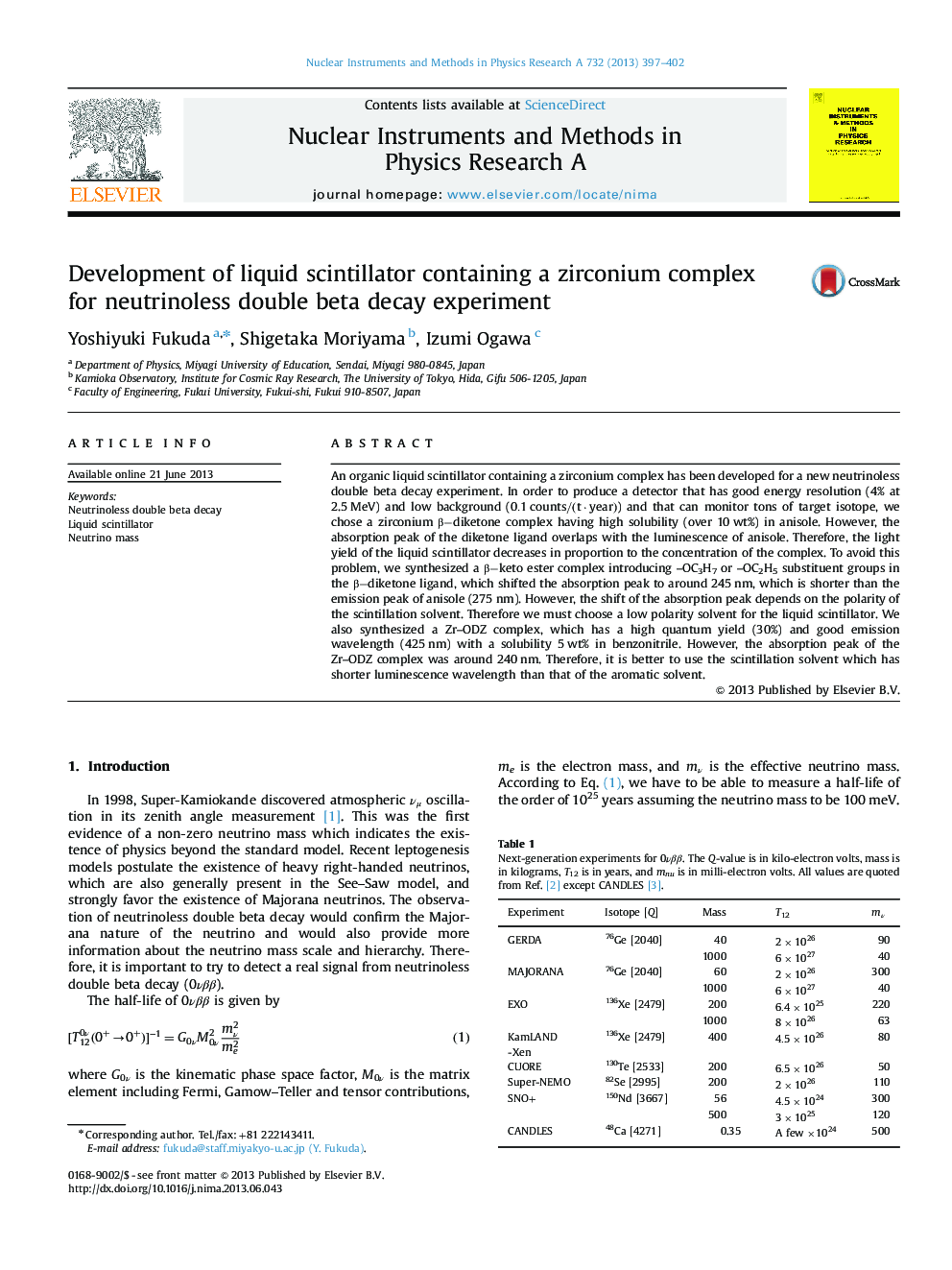| Article ID | Journal | Published Year | Pages | File Type |
|---|---|---|---|---|
| 8179520 | Nuclear Instruments and Methods in Physics Research Section A: Accelerators, Spectrometers, Detectors and Associated Equipment | 2013 | 6 Pages |
Abstract
An organic liquid scintillator containing a zirconium complex has been developed for a new neutrinoless double beta decay experiment. In order to produce a detector that has good energy resolution (4% at 2.5 MeV) and low background (0.1counts/(t·year)) and that can monitor tons of target isotope, we chose a zirconium β-diketone complex having high solubility (over 10 wt%) in anisole. However, the absorption peak of the diketone ligand overlaps with the luminescence of anisole. Therefore, the light yield of the liquid scintillator decreases in proportion to the concentration of the complex. To avoid this problem, we synthesized a β-keto ester complex introducing -OC3H7 or -OC2H5 substituent groups in the β-diketone ligand, which shifted the absorption peak to around 245 nm, which is shorter than the emission peak of anisole (275 nm). However, the shift of the absorption peak depends on the polarity of the scintillation solvent. Therefore we must choose a low polarity solvent for the liquid scintillator. We also synthesized a Zr-ODZ complex, which has a high quantum yield (30%) and good emission wavelength (425 nm) with a solubility 5 wt% in benzonitrile. However, the absorption peak of the Zr-ODZ complex was around 240 nm. Therefore, it is better to use the scintillation solvent which has shorter luminescence wavelength than that of the aromatic solvent.
Related Topics
Physical Sciences and Engineering
Physics and Astronomy
Instrumentation
Authors
Yoshiyuki Fukuda, Shigetaka Moriyama, Izumi Ogawa,
